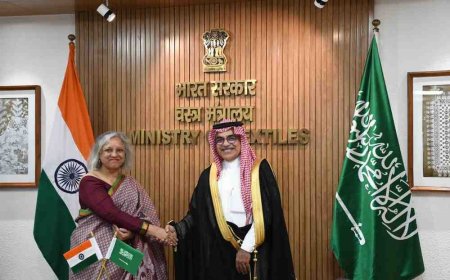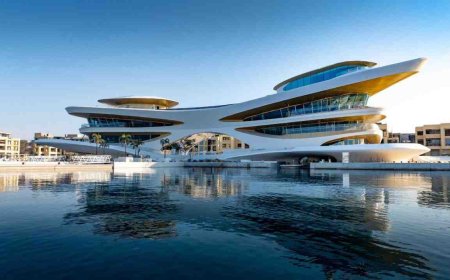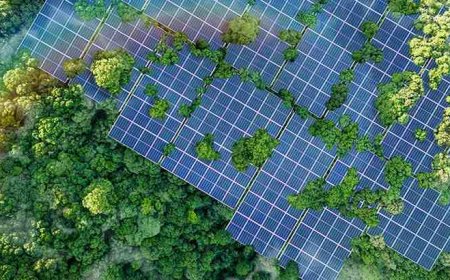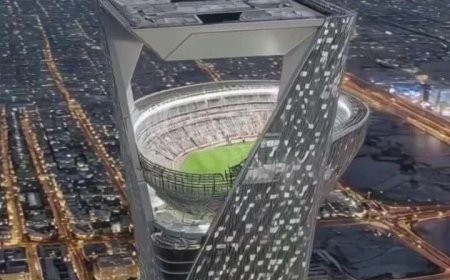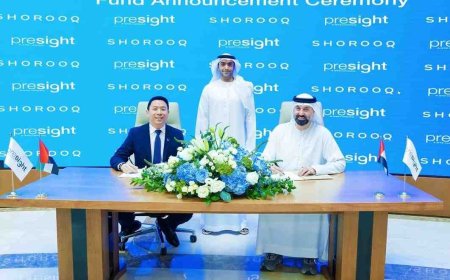Riyadh Rises High: Smart Skyscrapers Summit 2025 Champions Sustainable Innovation
Riyadh Rises High: Smart Skyscrapers Summit 2025 Champions Sustainable Innovation

The Smart Skyscrapers Summit 2025 officially opened in Riyadh, marking a significant moment in the ongoing evolution of urban development in Saudi Arabia.
The event brought together a diverse group of architects, urban planners, developers, technology experts, and policymakers to discuss groundbreaking innovations in vertical urbanism and sustainable high-rise developments. This summit is particularly timely, as the Kingdom pursues its ambitious Vision 2030, aiming to transform its cities into global centers of innovation, sustainability, and modern living.
At the heart of the summit’s discussions was the challenge of reimagining how cities can grow upward rather than outward. As urban populations continue to swell worldwide, the need for smart, sustainable skyscrapers becomes increasingly critical. These structures are no longer simply tall buildings; they represent complex ecosystems that integrate cutting-edge technology with environmentally responsible design to create spaces that enhance the quality of life for their inhabitants. The summit’s focus on vertical urbanism underlines the importance of developing high-rise buildings that function as self-contained communities, blending residential, commercial, and recreational spaces in innovative ways.
One of the summit’s most anticipated highlights was the unveiling of the "Rise Tower," a visionary project that aims to become the tallest building on the planet, soaring to an unprecedented height of 2 kilometers. This ambitious undertaking reflects Saudi Arabia’s determination to push architectural and engineering boundaries while emphasizing sustainability. The design plans for the Rise Tower envision a futuristic metropolis within a single structure, combining luxury residences, office spaces, retail areas, cultural venues, and recreational facilities, all powered by renewable energy sources. This mega-structure symbolizes not only technological prowess but also a commitment to reducing the environmental footprint of urban expansion.
Throughout the summit, speakers highlighted the importance of energy efficiency in skyscraper design. High-rise buildings traditionally consume vast amounts of energy for heating, cooling, lighting, and transportation within the structure. The summit showcased innovations such as smart energy management systems that optimize electricity use, the integration of solar panels and wind turbines into building exteriors, and advanced insulation materials that minimize energy loss. These developments aim to dramatically reduce greenhouse gas emissions and help combat climate change, positioning skyscrapers as part of the solution rather than the problem.
The summit also explored the role of smart technology in creating responsive, adaptable buildings. Sensor networks, artificial intelligence, and Internet of Things (IoT) devices were discussed as tools for enhancing building management, occupant comfort, and safety. For example, smart elevators that anticipate demand, lighting systems that adjust based on natural daylight, and climate controls that respond to real-time environmental data can all contribute to more efficient and enjoyable living and working environments. The use of these technologies also enables better resource management, from water conservation to waste reduction, aligning with broader sustainability goals.
Beyond technological advancements, the summit stressed the social dimensions of vertical living. High-density urban environments require careful planning to ensure that residents have access to green spaces, social amenities, and community-building opportunities. Discussions focused on designing mixed-use developments that encourage interaction among residents and foster a sense of belonging. Features such as rooftop gardens, communal lounges, fitness centers, and cultural spaces were highlighted as essential components for creating vibrant vertical communities. These elements are crucial in countering the sense of isolation that can sometimes accompany high-rise living and in promoting mental and physical well-being.
Urban planners and architects also addressed the challenge of integrating these skyscrapers into the broader cityscape. Effective transportation links, pedestrian-friendly zones, and connectivity to public transit are vital for minimizing traffic congestion and reducing reliance on private vehicles. The summit emphasized the importance of holistic urban planning that considers not only the individual building but also its impact on the surrounding environment and infrastructure. This approach supports the creation of sustainable, livable cities where skyscrapers complement rather than dominate the urban fabric.
Regulatory and policy frameworks featured prominently in the discussions, as stakeholders recognized that innovation must be supported by conducive legal and institutional environments. Participants called for updated building codes that reflect the latest advances in technology and sustainability standards. Incentives for green construction and penalties for non-compliance were identified as tools to accelerate the adoption of sustainable practices. Moreover, collaboration between government entities, private developers, and academic institutions was underscored as critical to driving innovation and ensuring that ambitious projects are realized effectively.
The summit further highlighted the importance of education and workforce development in supporting the smart skyscraper revolution. As buildings become more technologically complex, a skilled labor force capable of designing, constructing, and maintaining these structures is essential. Discussions explored initiatives to train architects, engineers, technicians, and facility managers in the latest tools and practices. Promoting interdisciplinary collaboration and fostering innovation hubs were also seen as vital for sustaining momentum in this rapidly evolving field.
Sustainability, of course, was a recurring theme throughout the event. Saudi Arabia’s commitment to environmental stewardship and sustainable growth is reflected in its Vision 2030 goals, which aim to diversify the economy while preserving natural resources. Smart skyscrapers are positioned as flagship projects within this framework, showcasing how technological advancement can coexist with ecological responsibility. The use of renewable energy, water recycling systems, and environmentally friendly construction materials were cited as key strategies to minimize environmental impact.
The summit’s emphasis on renewable energy integration also mirrors broader regional trends, as the Gulf countries increasingly invest in solar and wind power to reduce dependence on fossil fuels. Incorporating these energy sources directly into building design not only cuts emissions but also enhances resilience by providing localized power generation. This is especially important in the face of climate change, which poses significant risks to urban centers through rising temperatures and extreme weather events.
Attendees of the Smart Skyscrapers Summit 2025 were unanimous in their belief that the future of urban living lies in vertical development that is smart, sustainable, and socially inclusive. The challenges of rapid urbanization, resource scarcity, and climate change demand innovative solutions that rethink traditional models of city growth. Through dialogue, collaboration, and the sharing of best practices, the summit provided a valuable platform to accelerate progress toward these goals.
As Riyadh positions itself as a leader in smart urbanism, the summit showcased the city’s readiness to embrace change and adopt cutting-edge technologies. The event also reinforced the Kingdom’s role on the global stage as a hub of innovation, sustainability, and futuristic urban design. The outcomes of the summit are expected to influence policies, investments, and development projects in the coming years, setting a benchmark for smart skyscraper initiatives worldwide.
The vision articulated at the summit is one where skyscrapers are more than towering landmarks; they are ecosystems that support vibrant communities, drive economic growth, and contribute positively to the environment. By leveraging technological advancements and sustainable practices, Saudi Arabia aims to create urban spaces that not only meet the demands of a growing population but also inspire new ways of living and working in harmony with the planet.
In conclusion, the Smart Skyscrapers Summit 2025 in Riyadh represents a milestone in the evolution of urban development. It has brought together the best minds to tackle the complex challenges of vertical urbanism and sustainable high-rise construction. The summit’s discussions and projects, including the awe-inspiring Rise Tower, highlight the potential for innovation to transform the way cities grow and function. As these ideas move from concept to reality, Riyadh and Saudi Arabia are set to become exemplars of smart, sustainable urban living in the decades to come.
What's Your Reaction?








